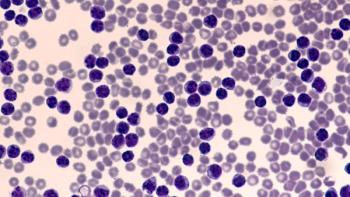
Phase 2 Study Investigating Milvexian Met Primary Endpoints for Thromboembolic Diseases
The phase 2 AXIOMATIC trials assessing milvexian met its primary endpoints, with researchers anticipating a phase 3 trial to come within the year.
Oral factor XIa (FXIa) inhibitor milvexian, when combined with background platelet therapy, was shown to reduce the relative risk of recurrent symptomatic ischemic strokes by 30% among patients with an acute non-cardioembolic ischemic stroke or transient ischemic attack. The results of thephase 2 AXIOMATIC trials showed that FXIa inhibitors may reduce vascular event risk without increasing the risk of bleeding.
“Early stroke recurrence after ischemic stroke or transient ischemic attack remains a significant risk despite advances in secondary prevention. Due to bleeding concerns, there are currently no anticoagulants used when a patient suffers an acute non-cardioembolic ischemic stroke; however, these data suggest that milvexian has potential to improve outcomes for stroke patients in clinical practice,” said Mukul Sharma, MD, MSc, FRCPC, director of the Stroke Program at McMaster University, Population Health Research Institute and Hamilton Health Sciences, in a press release.
Additionally, milvexian is being studied to prevent and treat major thrombotic (blood-clotting) conditions. During the phase 2 AXIOMATIC trials, which consisted of 2 trials, investigators specifically assessed efficacy, safety, and dose response.
The AXIOMATIC-SSP (NCT03766581) was the most recent trial conducted. It evaluated milvexian for the prevention of new symptomatic ischemic stroke or new covert brain infarction in patients who had suffered acute ischemic stroke or transient ischemic attack and were currently on aspirin and clopidogrel.
The first AXIOMATIC-TKR (NCT03891524) trial evaluated the incidence of total venous thromboembolism (VTE) up to 14 daysafter patients underwent total knee replacement (TKR) surgery.
During the phase 2, randomized, double-blind, placebo-controlled, and dose-ranging AXIOMATIC-SSP trial, investigators looked at 2366 participants who were randomized 2:1. Participants took 1 of 5 prescribed doses of milvexian on a 16-dose scale for 1 to 2 times daily. They concurrently took an open-label aspirin and clopidogrel for the first 21 days, then an aspirin until day 90.
“The most important factor for stroke clinicians is the ability to reduce the risk of symptomatic ischemic stroke, and the AXIOMATIC-SSP study demonstrates this potential benefit with milvexian without increase of symptomatic intracranial hemorrhage or fatal bleeding,” Sharma said in the press release.
The randomized, open-label, parallel-group, dose-ranging multicenter AXIOMATIC-TKR study looked at 1242 patients who either received 1 of 7 or 40 mg milvexian doses or a same dose of subcutaneous enoxaparin for 10 to 14 days. Milvexian did not increase bleeding for postoperative VTE prevention, nor did it increase major bleeds.
“The AXIOMATIC-SSP results, together with previously reported findings from the phase 2 study of milvexian in total knee replacement, further reinforce our confidence in this asset and we expect to initiate our broad phase 3 program later this year,” Puneet Mohan, MBBS, MD, PhD, vice president, Milvexian Clinical Development, Bristol Myers Squibb, said in the press release statement.
Reference
Bristol Myers Squibb. Late-Breaking Results From Phase 2 AXIOMATIC-SSP Study of Milvexian, an Investigational Oral Factor XIa Inhibitor, Show Favorable Antithrombotic Profile in Combination With Dual Antiplatelet Therapy. BMS wesite. August 28, 2022. Accessed on August 29, 2022. https://news.bms.com/news/details/2022/Late-Breaking-Results-From-Phase-2-AXIOMATIC-SSP-Study-of-Milvexian-an-Investigational-Oral-Factor-XIa-Inhibitor-Show-Favorable-Antithrombotic-Profile-in-Combination-With-Dual-Antiplatelet-Therapy/default.aspx
Newsletter
Stay informed on drug updates, treatment guidelines, and pharmacy practice trends—subscribe to Pharmacy Times for weekly clinical insights.




















































































































































































































